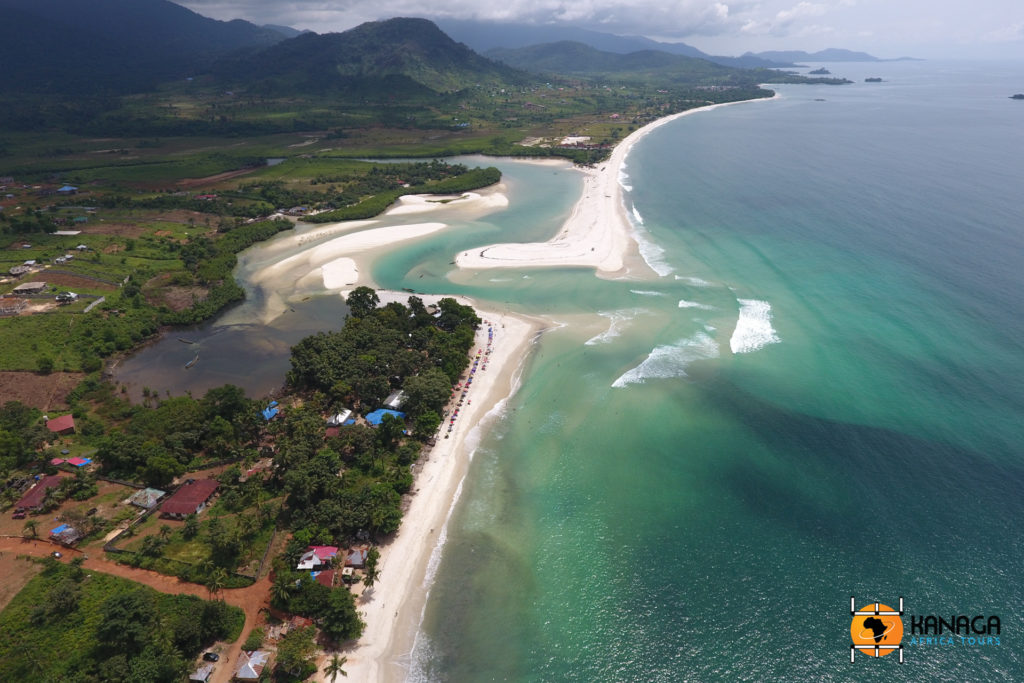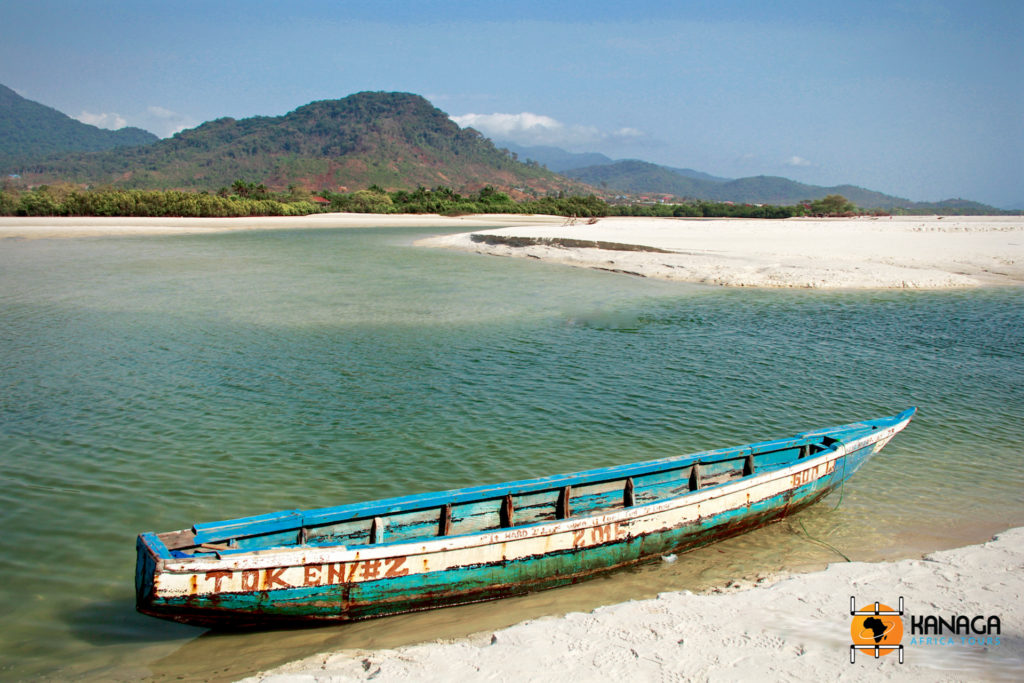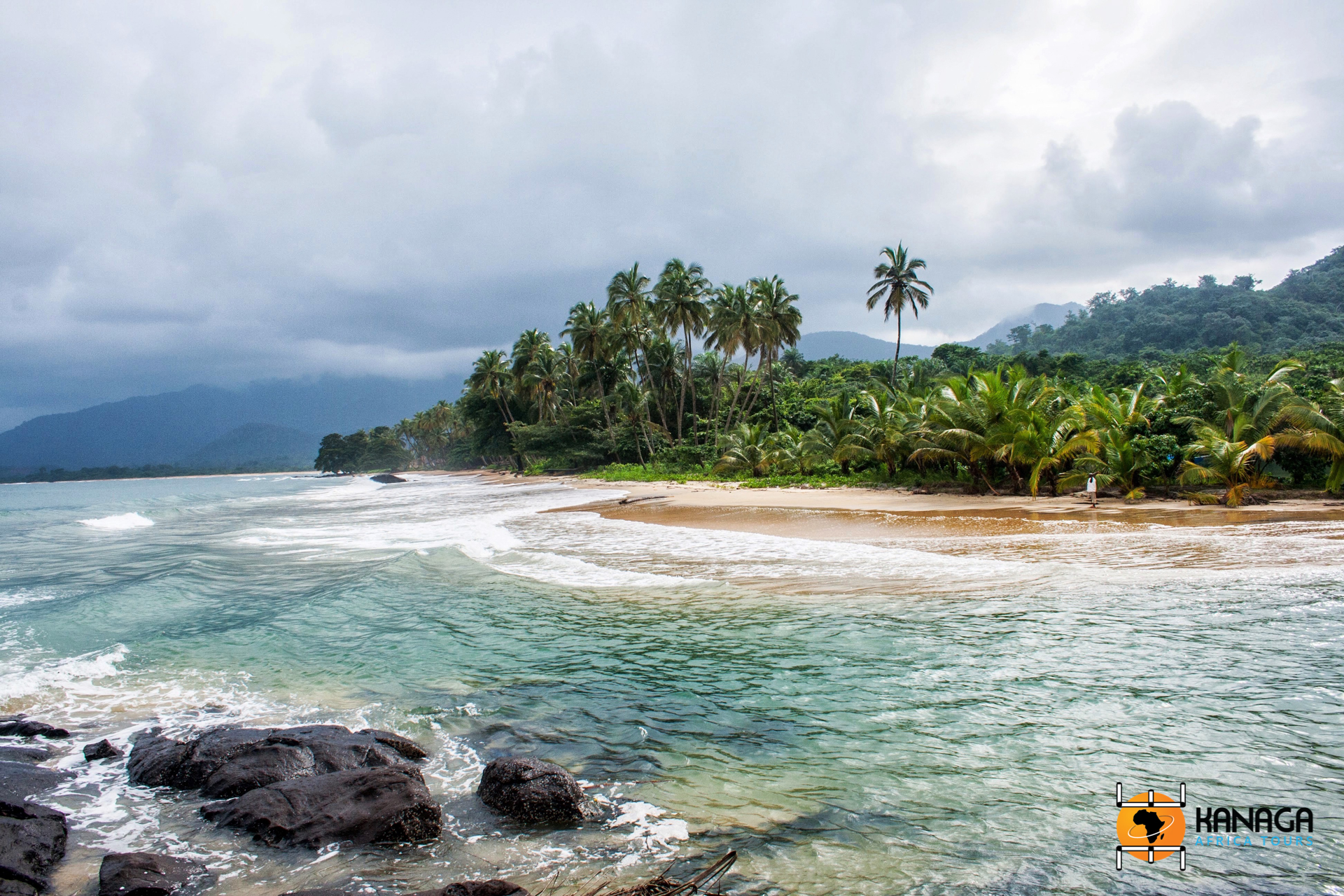© F. Picciati
A land of cultures and traditions, of extraordinary nature and biodiversity, the discovery of Sierra Leone also passes through places steeped in memory, around the capital Freetown, focusing on the paradisiacal coastal scenery, between crystalline archipelagos and lush river estuaries, which today would be difficult to imagine as the scene of the age-old slave trade.
Following a chronological order of Sierra Leone’s colonial history, the first visit takes you to a small island lying placidly on the rugged Rokel River estuary. A small traditional boat, called a gladi gladi, sails from Pepel Harbour to Bunce Island, once one of the most important strategic outposts on the British slave trade routes. Today, the remnants of this sad past are still visible in the old 17th century fort, the cannons still deployed to defend the commercial interests of the British Crown and the ghostly cells where slaves were locked up. But nature has now taken over, swallowing up and rendering harmless these ruins, which lie half-hidden amidst the lush tropical forest, in a spectacular riverside setting, animated by small fishing communities.
Chaotic Freetown, in the shadow of its monumental Cotton Tree, is the Victorian-style cradle of British political control and Krio culture.
Off its shores, the paradisiacal Banana Islands were the ‘return gate’ through which a number of colonies of African slaves freed in America returned in the 19th century with British permission to found new societies of free citizens.
Today, these symbolic places in Sierra Leone’s history look like small marine paradises, among the most enchanting in the Atlantic Ocean. Called the Hawaii of West Africa, the Dublin and Ricketts islands, linked by a stone causeway, are home to dense forests and wild beaches of white sand, lapped by surreally clear waters.
But you don’t have to go to the islands to find the best that Sierra Leone’s tropical coast has to offer, and the added value of bustling Freetown is that it is probably the only African capital to have unspoilt city beaches. Just a few kilometres from the city centre are marine oases of incredible beauty, vast expanses of talcum-white sand, coconut palms as far as the eye can see, transparent waters that constantly reshape the scenery under the tidal flows, river courses that meander through the dense vegetation of mangroves and tropical plants, until they meet the ocean.
Bureh Beach, Lakka Beach, Tokeh Beach and the spectacular River No. 2 Beach, you’ll be spoilt for choice of coastal spots that come alive at weekends, in a local party and beach holiday atmosphere, but still retain all their wild beauty, especially during the week, when you can fully enjoy these boundless paradises.
A number of typical restaurants, simple and well integrated into the natural setting, offer excellent Sierra Leonean cuisine by the sea and a feast of fresh fish, unloaded directly from the fishermen’s boats. The hospitality of the Sierra Leonean people and the impromptu banquets of the rich local handicrafts will make your stay unforgettable.







